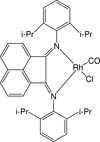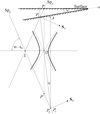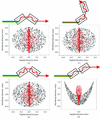issue contents
November 2001 issue

Cover illustration: Composite diagram showing the different aspects of synchrotron radiation covered by the Journal of Synchrotron Radiation
facility information
editorial
Free 

research papers
The XMaS beamline, located on an ESRF bending magnet, comprises a unique range of instrumentation for the study of magnetic and other materials in bulk, thin film and multilayer form. The instrumental facilities are described and their use illustrated with a range of recent scientific results.
When the diol dehydratase–adeninylpentylcobalamin complex is illuminated with visible light, the homolysis of the Co—C bond of adeninylpentylcobalamin is observed by synchrotron X-ray studies, which mimics the initiation stage of the enzymatic reaction.
Download citation


Download citation


The structures of two metal-organic complexes are presented. Both structures have been determined from high-resolution synchrotron powder diffraction data using grid-search techniques to position an initial model in the asymmetric unit. The Rietveld refinement technique was used to refine the models. Unit cells were determined from Guinier-camera data.
The local structure and structural changes in molten YCl3–LiCl–KCl and molten YBr3–LiBr systems have been investigated by using a high-temperature extended X-ray absorption fine structure (EXAFS) technique.
Elaboration of the theory which allows a sagittally focusing monochromator, based on X-ray diffraction–refraction phenomena in the general asymmetric case, to be easily designed. Some important properties of such types of monochromators are deduced.
The possibility of concentrating a synchrotron X-ray beam using diffraction by a single crystal with a properly designed transverse groove on its surface, suggested earlier, has been studied experimentally. The first experimental demonstration of this effect is reported, performed on beamline BM5 at the ESRF.
Refraction during Bragg diffraction is used for focusing of X-ray synchrotron radiation. A longitudinal hole drilled parallel to the Bragg planes plays the role of an X-ray lens.
A critical analysis of the cumulant method clarifies some relevant aspects of the relation between EXAFS parameters and physical properties of crystals.
A synchrotron radiation calculation code called SPECTRA is described. Numerical methods and examples of calculation are presented.
current events
Free 

Free 

Free 

Free 



 journal menu
journal menu








































